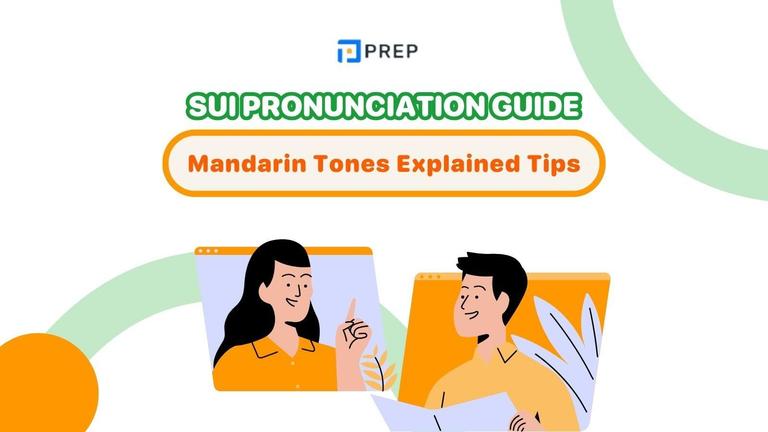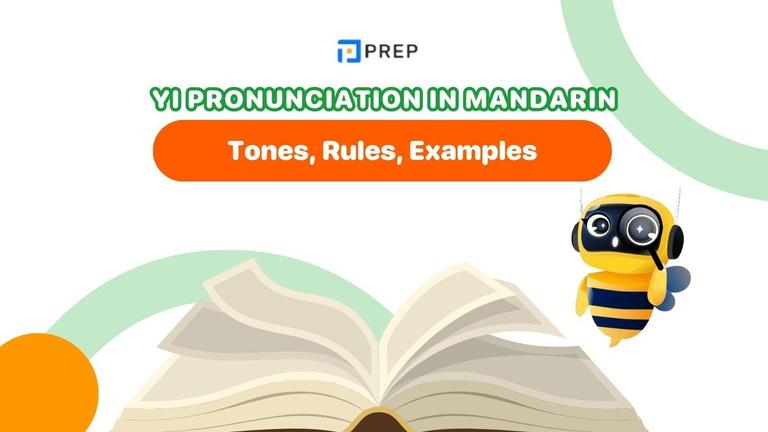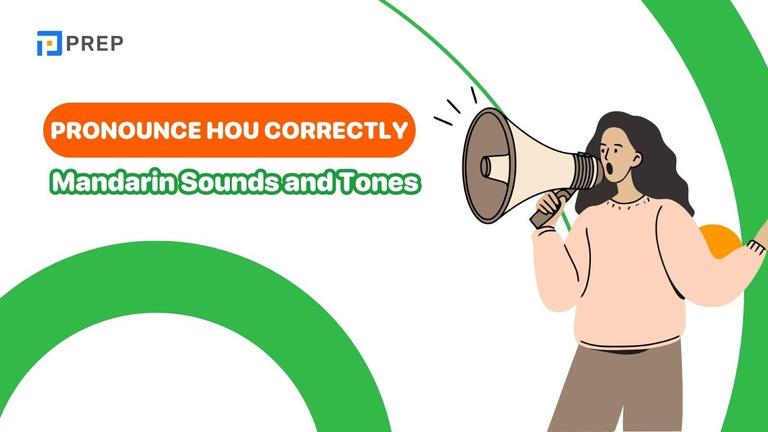Different From: Complete Grammar Guide with Usage Rules and Examples
Different from represents one of the most fundamental comparative structures in English, serving as a cornerstone for expressing distinctions and contrasts. Understanding its proper application becomes essential for achieving grammatical precision and natural expression. This comprehensive exploration examines the definition, usage patterns, and structural variations of Different from while providing practical exercises to master this crucial English construction.
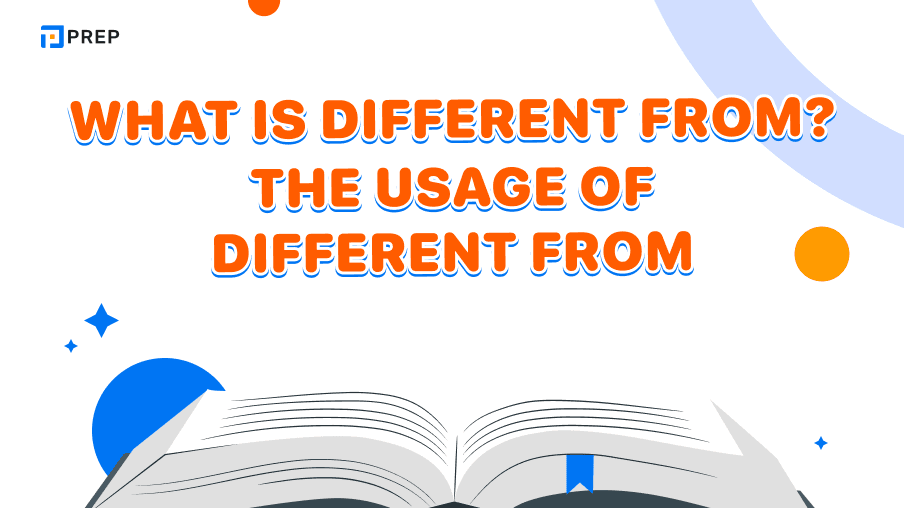
I. What is Different from?
Different has the pronunciation /ˈdɪf.ɚ.ənt/ and functions as an adjective meaning: “not the same as another or each other; unlike in nature, form, or quality; distinct; separate”. This fundamental concept shapes how we express variations and distinctions in English communication.
For example:
-
She seems to wear something different every day.
-
He's different now that he's been to college.
When different combines with the preposition from, it creates the phrase Different from. The Different from meaning establishes: not the same as another entity or situation. This structure provides the foundation for comparative expressions:
-
John is different from other people.
-
What’s different from last year?
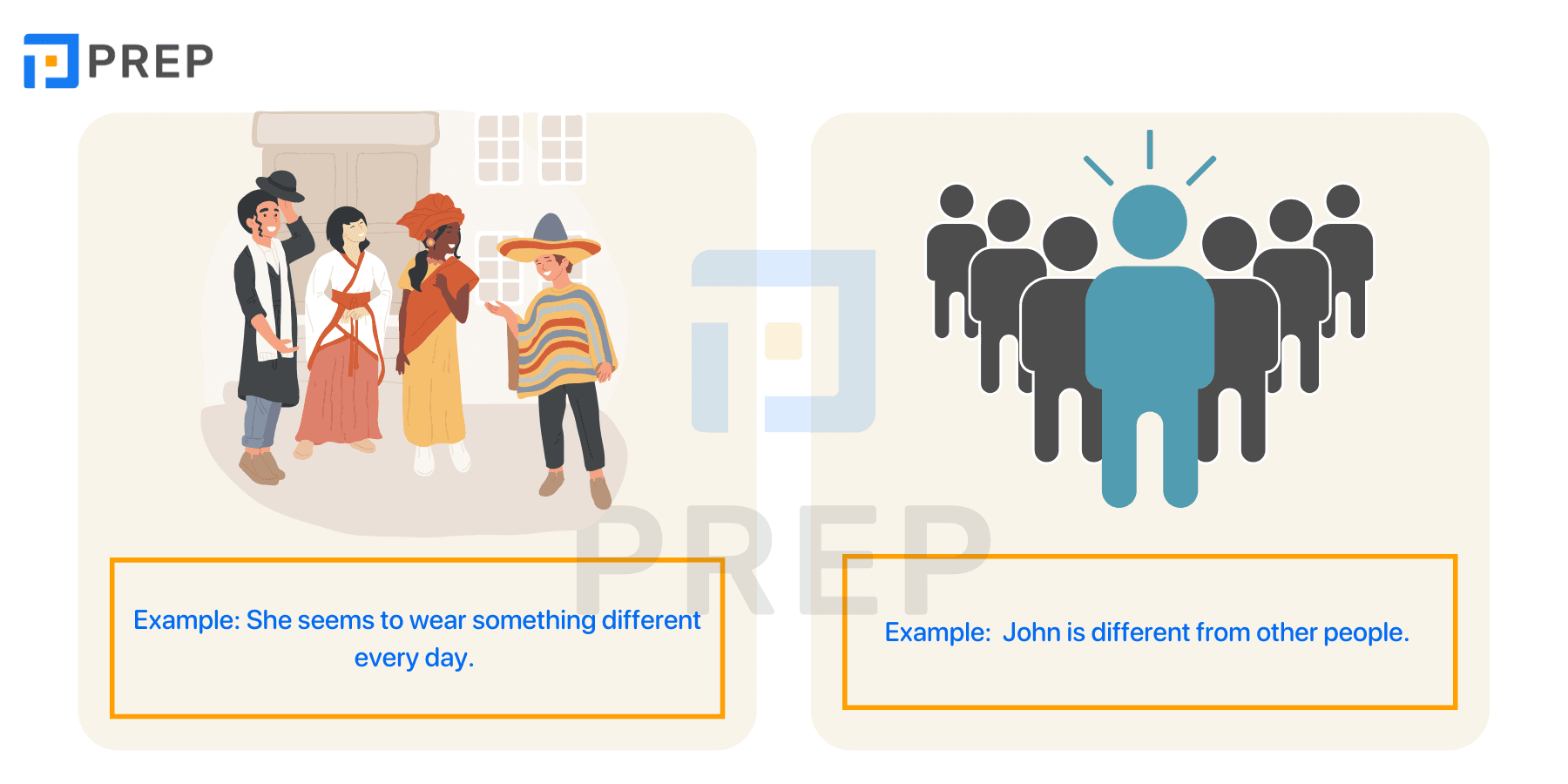
Different from operates alongside several equivalent expressions that enrich comparative vocabulary:
|
Different from synonyms |
Example |
|
Dissimilar /ˌdɪsˈsɪm.ɪ.lər/ |
The twins may look alike, but they are quite dissimilar when it comes to personality. |
|
Distinct /dɪˈstɪŋkt/ |
The word has three distinct meanings. |
|
Distinctive /dɪˈstɪŋk.tɪv/ |
She's got really distinctive handwriting. |
|
Unlike /ʌnˈlaɪk/ |
Dan's actually quite nice, unlike his father. |
|
Alternative /ɒlˈtɜː.nə.tɪv/ |
The hotel's being renovated, so we're looking for an alternative venue. |
II. Common phrases/words with Different
Mastering different requires understanding its common collocations and phrase patterns. These combinations appear frequently in both academic and conversational English:
|
Phrases/words |
Example |
|
Absolute difference |
The proportionate difference is greatest, but the absolute difference is smallest, for couples where the wife is aged 80 and over. |
|
Big difference |
There is a big difference between a five-year sentence, a forty-year sentence, and a sentence measured in three figures. |
|
Crucial difference |
The crucial difference between the old and the new systems is compliance with the principle of informational self-determination. |
|
Cultural difference |
Cultural differences in architectural education are seldom discussed in public debate among architecture teachers. |
|
Difference of attitude |
Surely that indicates a difference of attitude at least. |
|
Difference to |
This smartphone model is different to the one I had last year. |
|
Completely different |
Her approach to solving the problem was completely different from mine. |
|
Entirely different |
The new design is entirely different from what we originally planned. |
|
Difference type |
We need a different type of software to handle this task. |
|
Difference kind |
He prefers a different kind of music than what is usually played here. |
|
Difference of opinion |
They had a difference of opinion about the best way to proceed with the project. |
|
Have one’s differences |
Despite having their differences, they managed to work together effectively. |
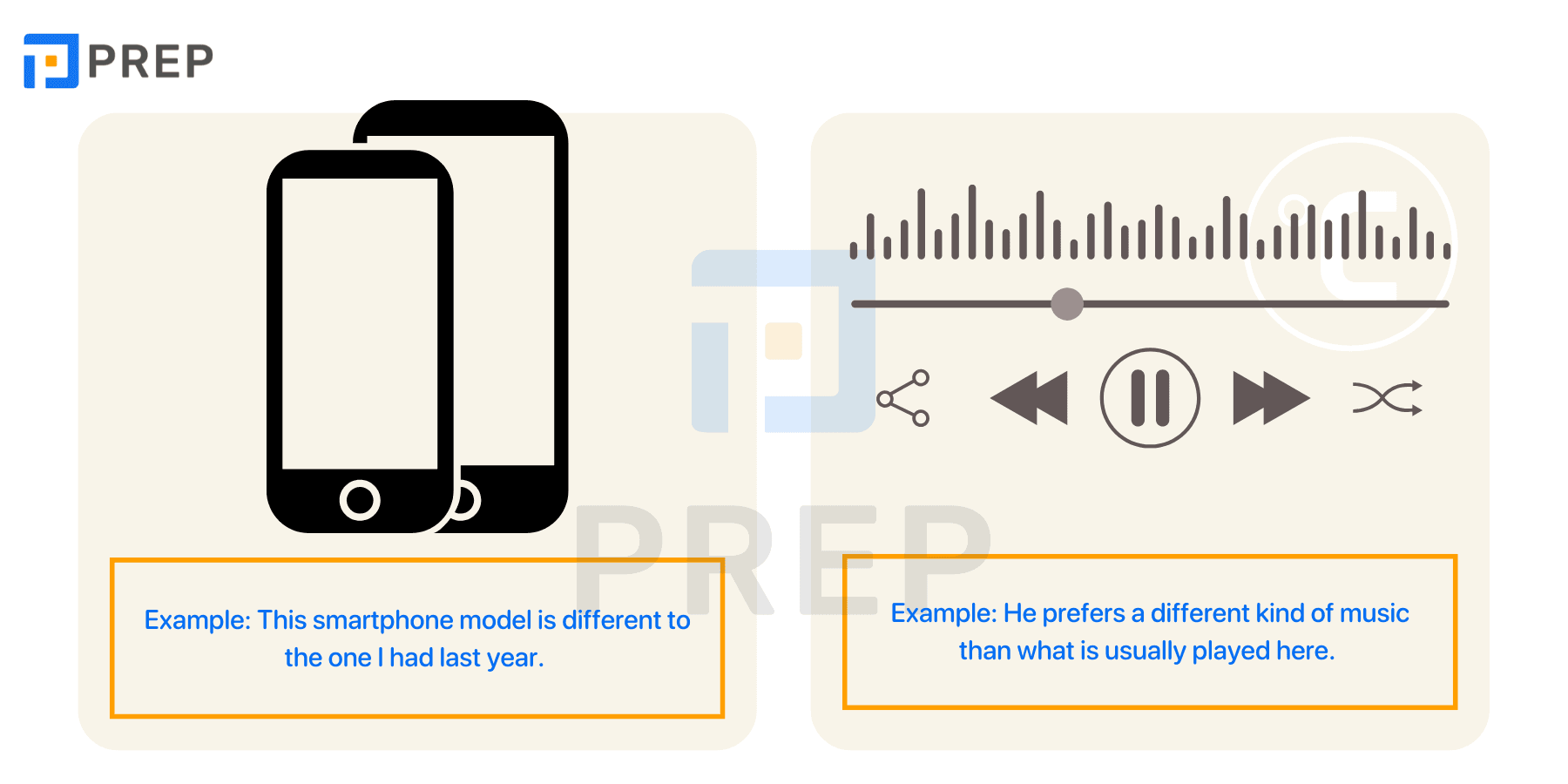
III. How to use Different from in Sentences
The Different from structure follows a specific grammatical pattern that ensures clarity and correctness:
Subject + to be/stative verbs + different from + object
Important note: Stative verbs describe states or conditions and cannot function in progressive (-ing) forms. These verbs include: look, seem, hear, feel, taste, sound, appear, and others.
-
That house is different from every house I ever lived in before.
-
Xavia looks very different from yesterday. She is prettier today!
-
It seemed different from what Jack expected.
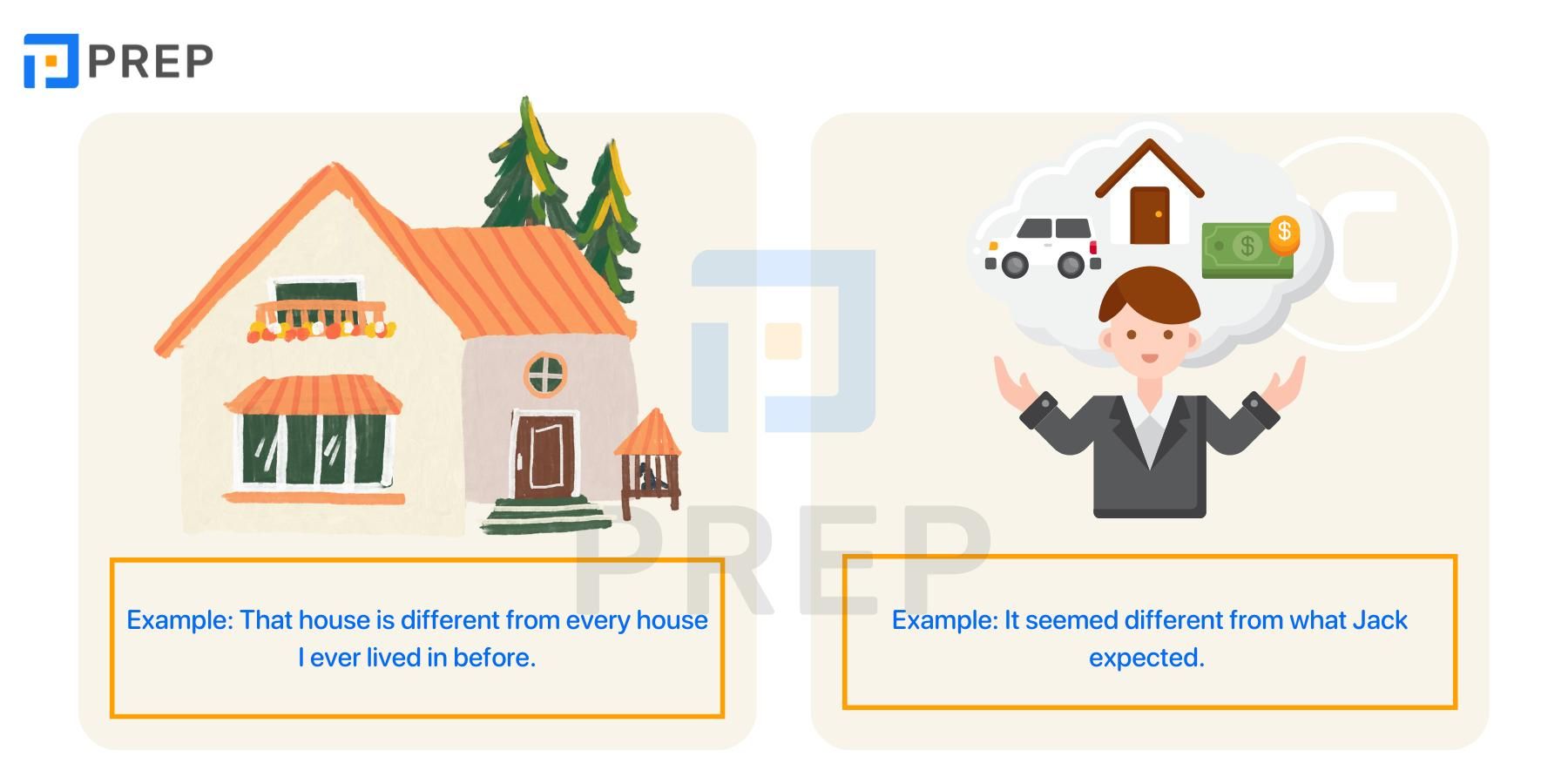
IV. Distinguishing Different from, Different to, Different than, Different with, and The same as
English presents multiple preposition options with different, creating potential confusion for learners. Understanding these distinctions ensures appropriate usage across various contexts.
1. Distinguishing Different to or Different from and Different than
The choice between these prepositions depends on regional preferences, formality levels, and contextual appropriateness:
|
Usage |
Different from |
Different to |
Different than |
|
Frequency of usage |
Common in both writing and speaking |
More common in spoken English |
Not widely used; typically used for comparative contexts |
|
Scope of usage |
Can be used in all cases |
Commonly used by British speakers (rarely by Americans) |
Commonly used by Americans (rarely by British speakers) |
|
Formality level |
Appropriate for all registers |
Informal to semi-formal contexts |
Informal contexts primarily |
|
Example |
|
|
|
Note: Different from provides the safest choice across all English varieties, formal writing, and professional communication. Both Different to and Different than can be rewritten using Different from without grammatical concerns or appropriateness issues.
2. Distinguishing Different from and Different with
These structures serve distinct comparative functions:
-
Different from: Compares one entity directly to another entity
-
Different with: Emphasizes changes or variations within the same subject due to specific conditions or circumstances
For example:
-
Richard looks so different with the new hair.
-
Emi seems different with the tattoos on her right arm.
3. Distinguishing Different from and The same as
These expressions function as direct opposites in comparative structures:
|
Different from |
The same as |
|
|
Definition |
Indicates distinctions between two or more entities |
Indicates similarity or equivalence between entities |
|
Example |
|
|
V. Exercises on using Different from
These exercises reinforce understanding and application of Different from structures:
1. Exercise
Exercise 1: Complete each sentence using either Different from or The same as:
-
The final match today is different ______ 2019.
-
How are you ______ from your father?
-
The cake tastes ______ as chocolate.
-
We imagine ourselves more ______ other animals.
-
Rain is pronounced ______ reign in English.
Exercise 2: Determine whether these different usage examples are TRUE (grammatically acceptable) or FALSE (requiring correction):
-
This trip has been different than the one I took to London 10 years ago when I spent most of my time in the pubs.
-
My sister is different to who she was last year. She has matured.
-
The jacket we bought is not different from the pricier one at the boutique.
-
Emily is very different with her sister.
-
You are really no different to the rest of us.
2. Answer
|
Exercise 1 |
1 – from |
2 – different |
3 – the same |
4 – different from |
5 – the same as |
|
Exercise 2 |
1 - F |
2 - F |
3 - T |
4 - F |
5 - T |
Mastering Different from enhances comparative expression capabilities while ensuring grammatical accuracy across formal and informal contexts. This structure provides the foundation for sophisticated comparative analysis, enabling precise distinction between concepts, objects, and situations. Regular practice with Different from constructions develops natural usage patterns essential for advanced English proficiency.
The comprehensive understanding of Different from alongside its variations empowers speakers to navigate comparative expressions with confidence. Through consistent application and awareness of regional preferences, learners achieve mastery of this fundamental English structure, facilitating clear and effective communication across diverse contexts.

Hi I'm Chloe, and I am currently serving as an Product Content Administrator at Prep Education. With over five years of experience in independent online IELTS study and exam preparation, I am confident in my ability to support learners in achieving their highest possible scores.
Comment
Premium content
View allPersonalized roadmap
Most read





